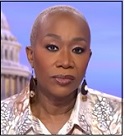
By Pam Martens and Russ Martens: March 11, 2024 ~ Billionaires Donald Trump and Elon Musk share a common credo: It’s legal if you can get away with it. (Key evidence to support that claim is the jury conviction of Donald Trump on 34 felony counts and his ability to secure a second term as President and the fact that Musk and his companies were under investigation by five federal Inspectors General – right before Donald Trump fired them and made Musk the investigator. There is also the not insignificant detail reported by the Wall Street Journal that Musk uses illegal drugs.) This credo came crashing down on the heads of both men yesterday. The U.S. stock market, a barometer of presidential leadership, plunged. The Dow Jones Industrial Average fell 890 points while the tech heavy Nasdaq dived 727.89 points or 4 percent. Tesla, the electric vehicle company where Musk serves as the … Continue reading










